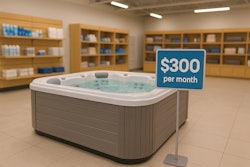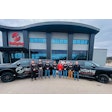
 CJ Stasik is the CEO at 1SEO Digital Agency. With over 20 years of experience in sales and marketing management, she aims to help businesses of all sizes grow through the use of innovative strategies that deliver real results.
CJ Stasik is the CEO at 1SEO Digital Agency. With over 20 years of experience in sales and marketing management, she aims to help businesses of all sizes grow through the use of innovative strategies that deliver real results.
When it comes to maximizing your business's potential, carefully curating your online presence is one of the most important avenues to remember. The world is no stranger to social media after more than a decade of its development, but using it to your advantage in your business model can be completely different than creating a personal profile for yourself.
A successful Google Business Profile and a few simple steps can launch your business into the forefront of your customers' minds — both current and potential.
STEP 1: SETTING UP YOUR GOOGLE BUSINESS PROFILE
It sounds simple — and in a lot of ways, it is, says CJ Stasik, CEO of 1SEO Digital Agency. "Marketing is all about making sure that your customers can find you when they need you," she explains. "Some of these tips will be things you've already heard of, but it's crucial to do these steps correctly."
When you search for anything relating to a business online, Google typically pulls up an overview of that company. This is your first line of contact. When you properly set up your Google Business Profile, customers can easily access your website and basic information that they'll need, like your address and phone number.
Something to be wary of, and something that should motivate you further to make sure your profile is complete, is what can happen when you haven't claimed your profile. "Anyone can claim a profile online," explains Stasik, "which means the online listing can be edited to reflect information that isn't true, or even shut it down." This isn't meant to scare you, but it's a real possibility you'll want to prevent.
Once you claim your business profile, you're in control. Add things like your website, address, phone number and high-quality photos of your business to present yourself as a put-together and reputable option for current and potential customers. And make sure they stay up-to-date and consistent across all of your online pages. "The one thing Google does not like is to refer someone to a business that is confused," Stasik says. "Inaccurate or inconsistent information will only confuse your customers and hurt you in the long run."
STEP 2: GETTING VERIFIED ON GOOGLE
Getting verified on Google goes hand- in-hand with the original set-up of your profile, and sets up your business for top search engine placement. With that done, Stasik says it's important to successfully market yourself online. Google's Local Service Ads (LSA) program, for one, can play a major part in your visibility to customers. This is a pay-per-lead system, rather than a pay-per-click (PPC) model that would require you pay for each click on your ad, even if it doesn't convert into a gained customer.
With LSAs, you'll only pay when someone who clicks on your ad ends up filling out a form, calls your business, or turns into a potential customer in another way. "You do have to spend more to make more," Stasik admits, "but based on the potential for conversions through the top placements that PPCs and LSAs afford you, it's a benefit that far outweighs the cost."
STEP 3: BUILDING A HIGH-CONVERTING LANDING PAGE
The next impression that customers will get after finding your business online is based on the subsequent landing page. Stasik emphasizes the importance of specific landing pages and tailoring them to each ad, because this is where you can make or break a potential customer.
"Your website is your baby," she says. "It's your business card online. You want it to have the right information and lead your customers to the right place."
If your business offers multiple services or specializes in more than one branch of the industry (for example, advertising pool installations versus spa installations), separate landing pages are crucial. "You want to make sure your messaging is accurate, that the pictures you use are accurately reflecting who you are as a business," Stasik explains. "People want to get their questions answered as fast as possible."
It sounds obvious from a consumer's point of view: Why would you click on an ad for spa installations just to be brought to a landing page that only showcases photos of pool installations? But you must be conscientious about following through on your end as the business owner. Make sure the content on your website matches the content your ad presents, and you're one step closer to securing a successful interaction.
STEP 4: CREATING VALUABLE CONTENT ON SOCIAL MEDIA
Markers of "valuable content" are different for each industry, but Stasik breaks down the best ways to engage your audience online. Whether it's through how-to videos, before-and- after slideshows of projects you've worked on, or something else, you can be well on your way to maximizing your business profiles online.
"Social media is where we go to get excited about things. We're keeping up with the Joneses," she says. "This is also where you can showcase the beauty of what you do, how you're helping people, and garner some real traction by engaging with your community."
Using programs like Loomly, Hootsuite, or the Meta Business Suite, can help you create a consistent posting schedule that will keep your content towards the front of your followers' feeds. Hashtags will sort your posts into relevant categories based on the keywords you use (think industry-specific for the best results).
How do you know it's working? Track your success over a period of time. It isn't always best to track likes, says Stasik, unless you're just starting out and hoping to build engagement on your page.
Tracking things like comments, website clicks, and how many people are sharing your posts online are other ways to get an understanding of how you're doing. This way, tailoring your posts can be done on an informed basis, depending on the types of statistics you get from measuring your success.
Your website and social media channels have almost unlimited potential to increase your sales and improve your business. Consistency is key. Give your customers — present and future — what they're looking for and watch as the phone starts to ring, as your social media gains traffic and your business starts to flourish.
This article first appeared in the March 2025 issue of AQUA Magazine — the top resource for retailers, builders and service pros in the pool and spa industry. Subscriptions to the print magazine are free to all industry professionals. Click here to subscribe.












































